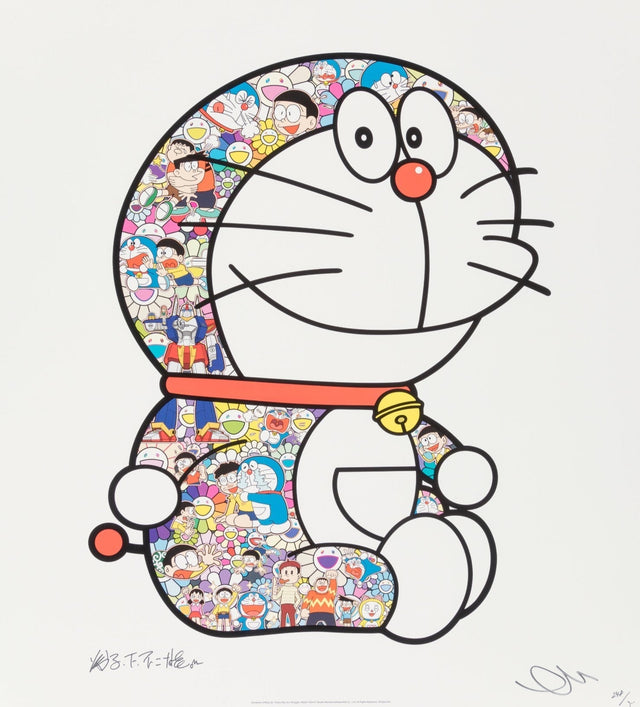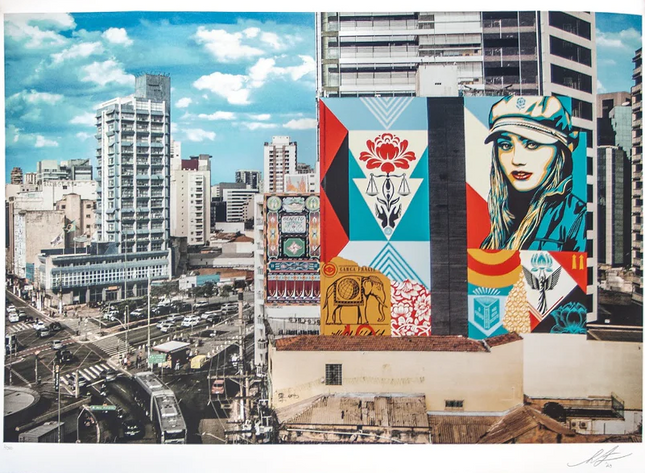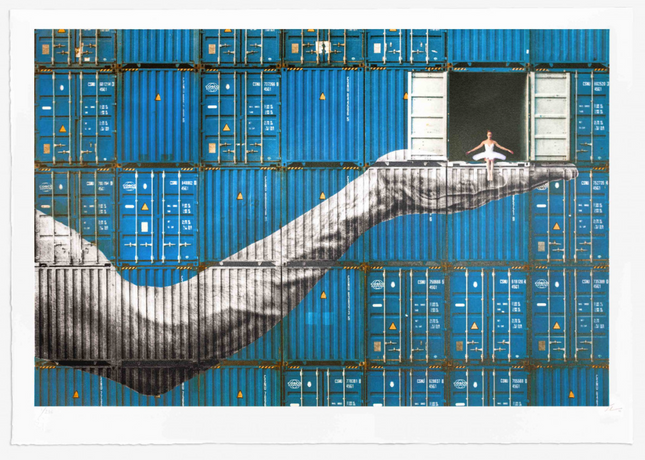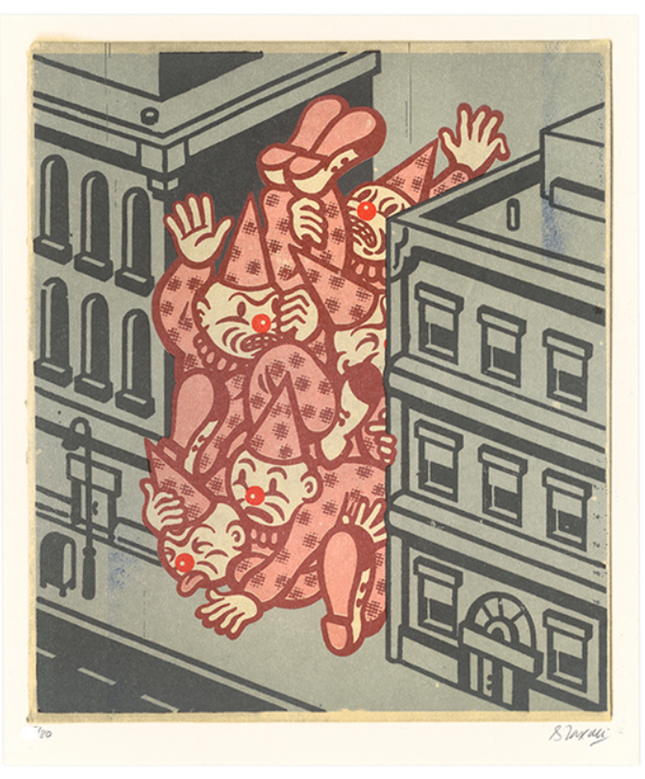Process and Appeal of Lithograph Print Fine Art Graffiti Street Pop Artwork Printing
Lithograph Print Fine Art Graffiti Street Pop Artwork involves etching a design onto a flat stone or metal plate with a greasy substance. The surface is then treated with a mixture of acid and gum Arabic, etching the ungreased portions of the design into the surface. When the plate is moistened, these etched areas retain water while the greasy parts repel it, allowing an oil-based ink to adhere only to the original drawing. The inked image can then be transferred to a piece of paper, producing a print. The ability to produce several high-quality reproductions from a single image has made lithography a favorite among artists and collectors. For street pop art and graffiti artists, whose work often begins in public spaces and on unconventional canvases, lithography offers a means to transfer their fleeting creations into a more permanent and distributable form. The lithograph print, a traditional printmaking technique, has found a unique and enduring place within pop art, street art, and graffiti artwork. This method of printing, based on the principle that oil and water do not mix, has been utilized by artists since the end of the 18th century and continues to be relevant today. Lithography allows for a high degree of detail and a richness of color, particularly appealing to artists in these genres, who often seek to create bold and impactful works.
Lithography's Role in Pop Art, Street Art, and Graffiti
In pop art, street art, and graffiti, lithograph prints have served as a bridge between the illicit thrill of creating art in public spaces and the established traditions of the fine art world. Artists like Keith Haring and Shepard Fairey have used lithography significantly to disseminate their work more widely and to create a different form of engagement with their audience. The accessibility of lithograph prints has allowed these art forms to transcend their origins and enter the homes and galleries of a diverse audience. The collectibility of lithograph prints is well-established, as they offer a more accessible entry point for collectors looking to own a piece of pop or street art. Unlike unique street murals or canvases, which can be challenging to acquire and preserve, lithograph prints are more accessible to distribute and own. For artists, lithographs present a method to share their work with a broader audience without diluting their art's original message or aesthetic. The influence of lithograph prints is also significant in preserving and documenting street pop art and graffiti artwork, which are inherently transient and often subject to destruction or decay.
Technological Advances and Lithograph Print Fine Art Graffiti Street Pop Artwork
Technological advances have also impacted the production of Lithograph Print Fine Art Graffiti Street Pop Artwork, with digital methods complementing traditional stone and plate techniques. These advancements have expanded the possibilities for artists, who can now produce lithographs that combine the old with the new, incorporating digital manipulation into the traditional process. This fusion of techniques aligns well with the ethos of street and graffiti art, which often involves a dialogue between traditional and contemporary, between permanence and impermanence. Lithograph prints represent a unique confluence of artistry, craftsmanship, and technology. They offer a snapshot of the ever-evolving landscape of visual art, capturing the essence of street pop art and graffiti in a form that is both enduring and accessible. As both a medium and a method, lithography has ensured that the vibrant visuals of the street can be appreciated far from their original locations, preserving the transient beauty of street art for future generations to study and enjoy.




